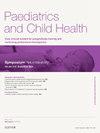全面的见解到新生儿癫痫:病因,诊断工具,管理和未来的方向
Q3 Medicine
引用次数: 0
摘要
新生儿癫痫发作是一种神经系统急症,在极低出生体重(VLBW)婴儿中尤为普遍,其发病率从极低出生体重的58/1000活产到足月婴儿的1-3.5/1000不等。这些癫痫发作通常与缺氧缺血性脑损伤、颅内出血、动脉缺血性中风或感染有关。诊断主要依赖脑电图(EEG),因为脑电图发作的发生率很高。常见的病因如缺氧缺血性脑病(HIE)、低血糖、中风和低钙血症显著影响神经发育和癫痫复发。这篇短文讨论了新生儿癫痫发作的原因、诊断和管理策略,为如何最好地管理不同妊娠期婴儿的症状和亚临床癫痫发作提供实用建议。它突出了我们在知识方面的差距,并提出了改进治疗方案和改善受影响新生儿预后的必要进一步研究。本文章由计算机程序翻译,如有差异,请以英文原文为准。
Comprehensive insights into neonatal seizure: etiologies, diagnostic tools, management and future directions
Neonatal seizures are a neurological emergency, particularly prevalent in very low birth weight (VLBW) infants, with incidences ranging from 58/1000 live births in VLBW to 1–3.5/1000 in term infants. These seizures are often linked to hypoxic–ischemic brain injury, intracranial haemorrhage, arterial ischemic stroke, or infection. The diagnosis relies heavily on electroencephalography (EEG) due to the high incidence of electrographic-only seizures. Common aetiologies such as hypoxic ischemic encephalopathy (HIE), hypoglycemia, stroke, and hypocalcemia significantly impact neurodevelopment and seizure recurrence. This short article discusses the causes, diagnosis and management strategies of neonatal seizures, offering practical advice on how to best manage symptomatic and subclinical seizures in babies of various gestation. It highlights the gaps in our knowledge and suggests what further research is essential to refine treatment protocols and improve prognoses for affected neonates.
求助全文
通过发布文献求助,成功后即可免费获取论文全文。
去求助
来源期刊

Paediatrics and Child Health (United Kingdom)
Medicine-Pediatrics, Perinatology and Child Health
CiteScore
1.20
自引率
0.00%
发文量
70
 求助内容:
求助内容: 应助结果提醒方式:
应助结果提醒方式:


